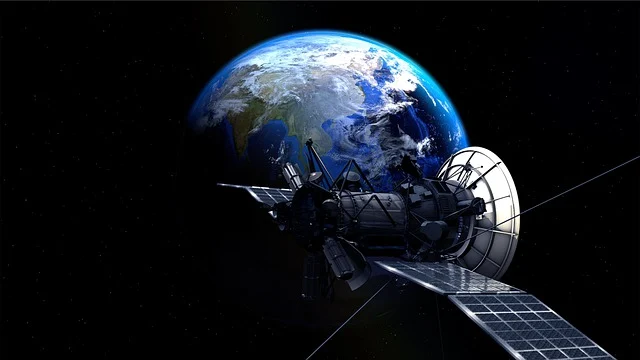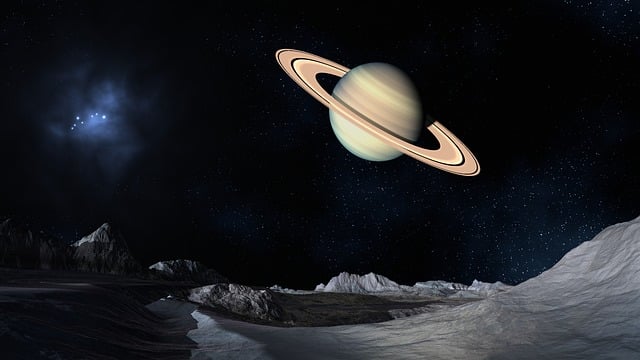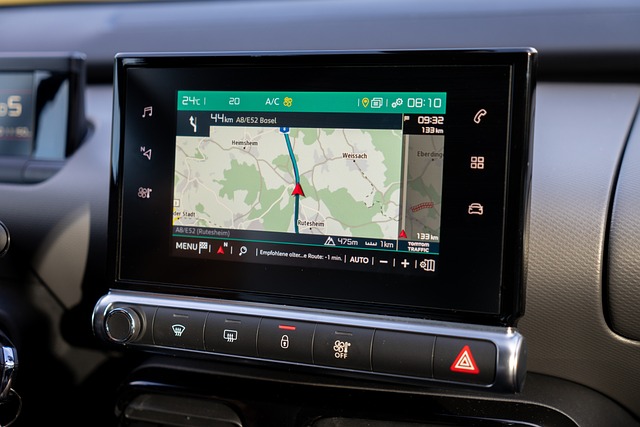Earth satellites serve a key role in modern research and technology. They are artificial objects those orbit the Earth, designed to serve many functions, from communication and navigation to weather monitoring and scientific study.

A satellites is a lighter body which is revolving continuously in a orbit around a comparatively much larger body,. e.g. Earth is a satellite of sun and moon is satellite of Earth.
Orbital speed of a satellite:- It is defined as the minimum speed required to put the satellite into a given orbit around the earth.
Orbital speed of satellite, when it is revolving around Earth at a height h is given by
V02 = GMg /RE +h = RE g / RE +h
When the satellite is orbiting close to the surface of Earth, i.e, h < RE
V02 = RE g /RE = gRE
The orbital speed of a satellite is independent of the mass of the satellite.
For a satellite orbiting close to the surface of the earth, i.e h < RE
T2 = 2pi RE / g = 84.6 min
Height of a satellite above the Earth’s surface :- h = [T2R2Eg / 4pi2]1/3 – RE
What Are Satellites?
Any object that follows a curved orbit around a planet is called a satellite. Artificial satellites are created by humans and sent into space for specific purposes, whereas natural satellites, such as the Moon, exist naturally. These man-made satellites are outfitted with cutting-edge technology to efficiently accomplish their duties

Types of Satellites
Satellites are classified, based on their purposes and orbits:
Communication Satellites: By sending signals for internet, phone, radio, and television services, these satellites facilitate international communication. India’s INSAT and GSAT series are two examples.
Weather satellites: By tracking atmospheric conditions, these aid meteorologists in tracking natural disasters and making weather predictions. This is likewise the case with the INSAT series.
Navigation satellites: They give precise location and time data for global positioning systems (GPS). One example is the Indian Regional Navigation Satellite System (IRNSS), commonly referred to as NavIC.
Earth Observation Satellites: These collect the information about the Earth’s surface for use in disaster relief, forestry, agriculture, and land mapping. The Cartosat and Resourcesat series are two examples.
Space, the Earth’s atmosphere, and other celestial phenomena are studied by scientific satellites. For example, Astrosat in India investigates astrophysics and astronomy.
Military satellites: Developed for defense, they improve monitoring, enable secure communication, and keep an eye on enemy activity
Components of a Satellite
Satellites consist of several key components:
Payload: This is the operational component of a satellite that carries out its designated task, such as transponders for communication or cameras for imaging.
Power System: The satellite is powered by solar panels and batteries. Batteries store energy for use when the spacecraft is in Earth’s shadow, and solar panels turn sunlight into electricity.
The satellite’s propulsion engine aids in modifying its orbit or location in space.
Communication System: The satellite can transmit and receive data from Earth thanks to antennas and transponders.
Thermal Control System: This controls the satellite’s temperature to shield its delicate electronic parts from the intense heat of space.
Control and Stabilisation System: This system keeps the satellite oriented and makes sure it stays on course.
Principles of Satellite Motion
Sir Isaac Newton’s laws of motion and gravity are followed by satellites:
Centripetal Force: The equilibrium between a satellite’s tangential velocity and the gravitational pull toward Earth keeps it in orbit. A curving route around the earth is produced by this balancing.
Orbital Velocity: A spacecraft needs to reach this speed in order to remain in orbit. Near the Earth’s surface, this velocity is roughly 7.9 km/s.
Escape Velocity: A spacecraft will depart Earth’s gravitational influence and enter deep space if it surpasses the escape velocity of 11.2 km/s.
Orbits of Satellites
Various orbits are assigned to satellites based on their intended use:
Geostationary circle (GEO): Because these satellites circle at the same speed as the planet’s rotation, they look stationary in relation to Earth. They are positioned at an altitude of around 35,786 km and are perfect for communication and weather monitoring.
Low Earth Orbit (LEO): Usually employed for scientific research and Earth observation, these satellites are located between 180 and 2,000 kilometers above the ground.
Medium Earth Orbit (MEO): GPS and other navigation satellites usually use these orbits, which are between 2,000 and 35,786 kilometers above sea level.
Polar Orbit: As the earth spins, these satellites cover the entire world by passing over its poles. They are very helpful for environmental monitoring and mapping.

Applications of Satellites
In many ways, satellites have changed human life:
Connection: Even the most remote places can be connected by satellites, which offer smooth worldwide connection.
Weather Forecasting: By monitoring climatic changes and predicting weather, meteorological satellites enable prompt disaster warnings.
Navigation: GPS technology improves logistics and transportation by providing precise directions via satellites. Knowledge in science is advanced by satellites, which make it easier to do research on space, Earth’s atmosphere, and celestial events.
Earth observation: Satellites help to manage natural resources, keep an eye on environmental changes, and support urban planning.
Security & Defense: By improving communication and surveillance, military satellites contribute to national security.
